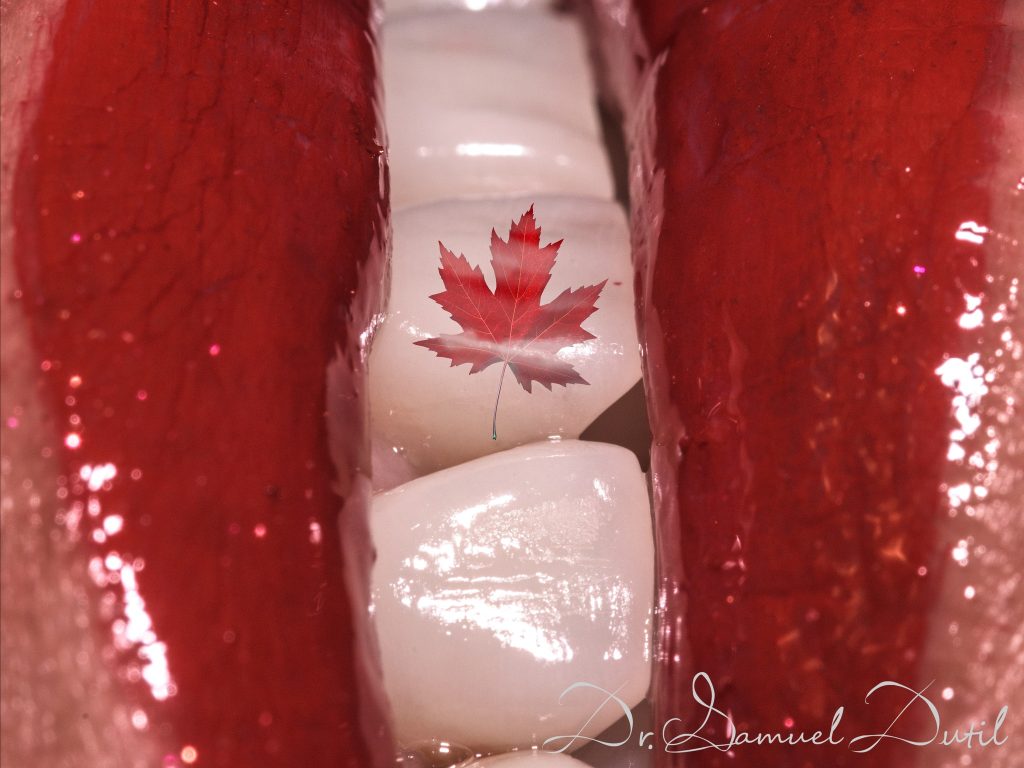What you need to know if you have a cracked tooth?

What are the symptoms of a cracked tooth?
A cracked tooth can be quite uncomfortable and may present with various signs and symptoms. It is always good to be attentive to these symptoms as prompt action may prevent the problem from worsening and complicating the potential for treatment. Here are some common signs to look out for:
- Sharp pain when you bite down or chew, especially when you release the bite.
- Sensitivity to hot, cold, or sweet foods.
- Swelling or tenderness around the affected tooth.
- Intermittent pain that comes and goes.
- Visible lines or breaks on the tooth.
Not all cracked teeth cause symptoms, so it’s important to see your dentist if you suspect you have one. They can diagnose the issue and recommend appropriate treatment. If assesed on time the crack propagation can be slowed down. This way preventing how soon the crack will evolve to the next stage.
The different stages of a cracked tooth
A cracked tooth can progress through several stages, each with varying degrees of severity and symptoms. Here are the main stages:
- Craze Lines:
- These are tiny, superficial cracks in the enamel.
- They are usually painless and don’t require treatment.
2. Fractured Cusp:
- This occurs when a piece of the tooth’s chewing surface breaks off, often around a filling.
- It typically doesn’t affect the pulp (the tooth’s inner tissue) and may cause minimal pain.
3. Cracks Extending into the Gum Line:
- A vertical crack that extends from the chewing surface towards the gum line.
- If the crack hasn’t reached the gum line, the tooth can often be saved. If it extends into the gum line, the prognosis worsens.
4. Split Tooth:
- This is a more severe crack that splits the tooth into two distinct parts.
- It often extends below the gum line, making it difficult to save the entire tooth.
5. Vertical Root Fracture:
- This crack starts below the gum line and extends upwards.
- It may not cause noticeable symptoms initially but can lead to infection over time.
How can a crack be found?
Exploring during routine examination:
During your dental exam at Academy Dental, your dentist will be evaluating crack if found in a tooth. It is common to find cracks in the form of Craze Lines and the difference between them and slightly deeper crack can be difficult to evaluate. The dentist may use light propagation or a microscope to help evaluate the severity of a crack. When found during an exam, a photo may be taken and the proactive treatment for it will be reviewed. Keep in mind that, not all cracks are easy to diagnosed. Some may be hiding under an existing filling or crown. Most of the time cracks would be visible on an x-ray in there early stages.
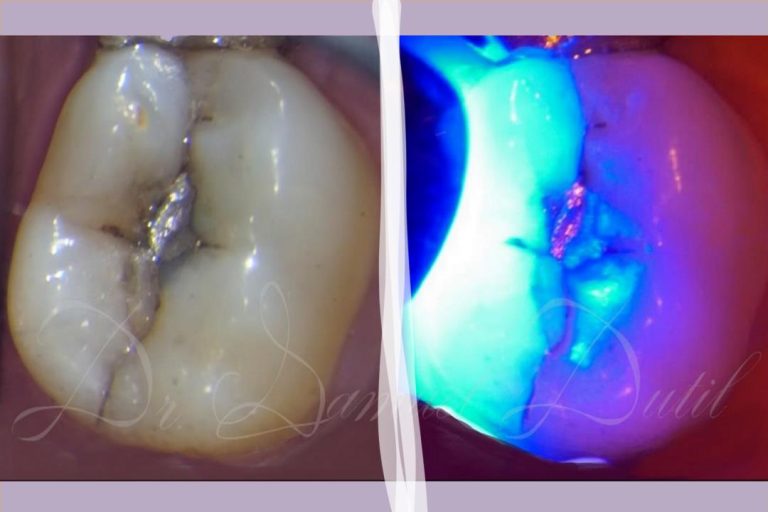
Exploring during a procedure.
Some cracks will hide under existing fillings and may be found only once the filling is removed. This situation makes diagnosing and preventing cracks during routine exam very difficult. Our dentists at Academy Dental, may use a Dental Operative Microscope to find and see these cracks. This will help assessing the prognosis of a tooth and choosing the best treatment options. For example, when a crack is found during a root canal treatment procedure, the microscope may allow to see the extend of the crack from the very inside of the tooth.

When a tooth hurts
When a crack started to give symptoms, the sometime hidden crack may be found be localizing the source of the sensitivity. At first, a bite test can be performed to find the specific area under a filling were a crack may hide. In other cases, if a crack as found its way deeper at the root level, gum probing can be done to find the source of the problem. Finally, x-ray 3D imaging can be done to find well hidden cracks evolving deeper in a root.
Your treatment options for a cracked tooth in Edmonton
Early Treatment and Prevention
You may think that teeth often crack from chewing are hard things or having bit on that one pop corn seed that didn’t pop. Although, it is important to avoid overly hard food that can cause trauma to the teeth. In most cases, cracks are the result of subconscious habits that we often can not control. A lifetime of clenching, griding, a malocclusion or a bite problems, leads to a crack forming and evolving into the tooth. Just like a crack in your windshield.
One way to prevent so of these force that you can not control is to consider using a nightguard. It is important for the nightguard to be custom made to your bite and properly adjusted. An other option, is to correct malocclusions or interferences in the bite.
Can a Crack be Sealed?
You first impression when receiving the diagnosis of a cracked tooth is that it may be seal the same way a windshield ship can be repaired. Unfortunately, it is not yet possible to pour resin or bonding agent into the crack of a tooth. Therefore, if a tooth require treatment, it is done by covering and rebuilding the tooth structure. This is done in a way to reinforced the tooth so that the crack propagation may be slowed down. Ideally, a crown is the most reliable way to protect the tooth if the crack require treatment. In some cases, bonded restoration can be used to cover the crack.
Reinforcing a Tooth with Fiber Mesh
Sometimes, if a crack is found the restoration may be reinforced using a Fiber Mesh “Ribbond”. This material is place over the crack and help load distribution with the hope a preventing crack propagation. In some cases, it may be an option for your. Our dentist at Academy Dental can review with you the potential of using Ribbond’s Fiber Mesh. Still, more research is needed to know the long term benefit of Ribbond. However, Fiber Mesh may be an alternative to a crown for you.
What to do if a crack extend below the Gum Line?
In the unfortunate event where a crack has gone deeper into the gum or the bone level, the prognosis of a tooth is greatly reduced. At first, your dentist will have to evaluate how deep the problem extend. Firstly, if a crack reached the nerve of a tooth a root canal treatment will be needed. However, if a crack reached the bone level the tooth may need to be extracted. Furthermore, your dentist may evaluate the situation using 3D x-ray, dental operation microscope or other diagnostic tools before making this decision.
Finally, in the event of an extraction we will review the replacement options with you. Generally, dental implants may be the best replacement option. Otherwise, dental bridges or removable denture are options that we can offer you in our dental office.
If you are concern about a cracked tooth, experiencing some symptoms or if you are wondering about your options. Contact us now to book an appointment with our experiences Dentist in Downtown Edmonton.
What you need to know if you have a cracked tooth? Read More »


